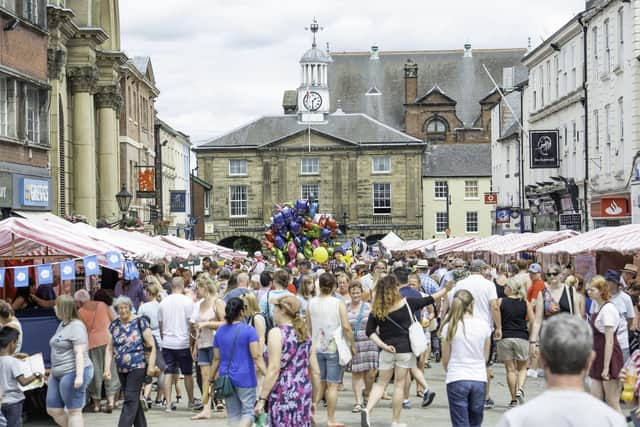Pontefract Liquorice Festival: The story of town's centuries-old association with liquorice
Quite who brought liquorice to the West Yorkshire town of Pontefract remains a mystery, but for centuries, the two have been inextricably linked.
So strong is Pontefract’s association with the sweet that a festival celebrating it has been a highlight of the town’s calendar for more than a decade.
Advertisement
Hide AdAdvertisement
Hide AdThis weekend, the Pontefract Liquorice Festival returns for its first live event since 2019.


One of the highlights is a new liquorice food and drink trail, offering visitors the chance to sample a number of drinks and dishes including a beef and liquorice stout pie and liquorice allsorts cocktails.
The liquorice plant, native to areas in and around the Middle East, grows well in Pontefract’s soil.
It is thought it was brought to the town either by medieval knights who owned Pontefract Castle, when they returned from the crusades, or by monks, who settled at Pontefract Priory. While exact origins are unknown, most sources associate the beginning of Pontefract liquorice cultivation in the mid 16th century.
Advertisement
Hide AdAdvertisement
Hide AdThe liquorice root had been used in medicine since the time of the Ancient Greeks, recommended for ailments such as asthma and other respiratory issues.
In Pontefract, it had medicinal use too. “The distribution of liquorice to herbalists and apothecaries likely helped the longevity of Pontefract liquorice,” says Steph Bennett, an Archive Assistant at West Yorkshire Archive Service.
“It was sweeter than sugar so was regularly used in treatments for coughs, shortness of breath, dropsy, stomach pains, and valuable when mixed with honey for wounds.
“Its sweetness masked the taste of some of the fouler smelling and tasting ingredients.”
Advertisement
Hide AdAdvertisement
Hide AdBy 1614, liquorice extract was being made into small lozenges, each with a stamp. It is thought this was an early form of what would become the famous Pontefract Cakes, though it wasn’t until the 1700s that liquorice was made into a sweet rather than a medicine.
By this point, liquorice fields had sprung up across the town and surrounding areas, and even in the grounds of Pontefract Castle.
In 1760, it is thought a chemist, Dunhill, added sugar to the medicinal recipes of liquorice, making it a sweet and Pomfret (Pontefract) Cakes began being produced commercially.
By 1900, Pontefract liquorice travelled the world. Sweets made in one of the many factories in the town were sold in shops and stalls across Europe, Asia and the Americas.
Advertisement
Hide AdAdvertisement
Hide AdIn turn international liquorice imports from Spain and Turkey fed the factories when locally grown supplies could not keep up with demand.
Factories created liquorice boots, pipes, wafers, sandwiches, pellets, telephones, watches, pigtails, skipping ropes, torpedoes. Though the most famous shape was the simple stamped Pontefract Cake.
Coun Michael Graham, Wakefield Council’s Cabinet Member for culture, leisure and sport, says: “We’re excited to welcome people back to the town precinct for what promises to be a weekend full of free, family-orientated fun.
“Local food and drink businesses have done an exceptional job in producing tasty delights made with liquorice.”
The festival takes place this weekend, July 9 and 10.
